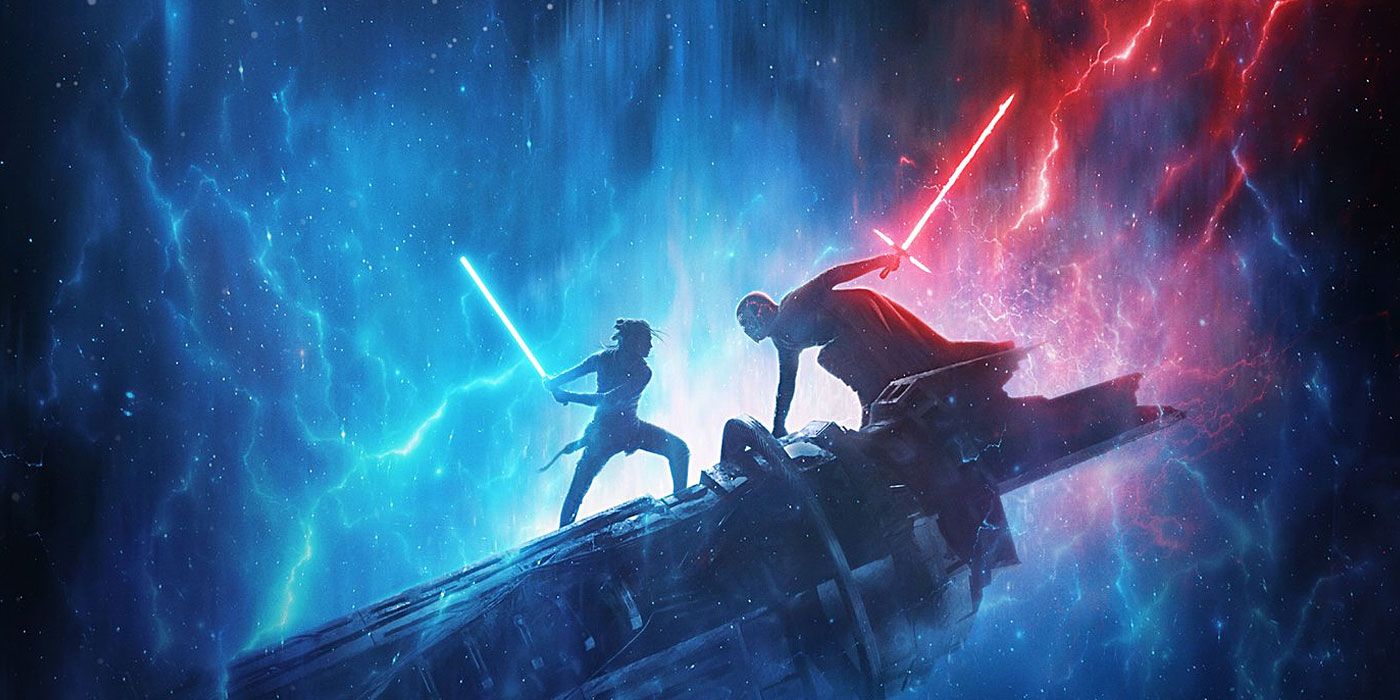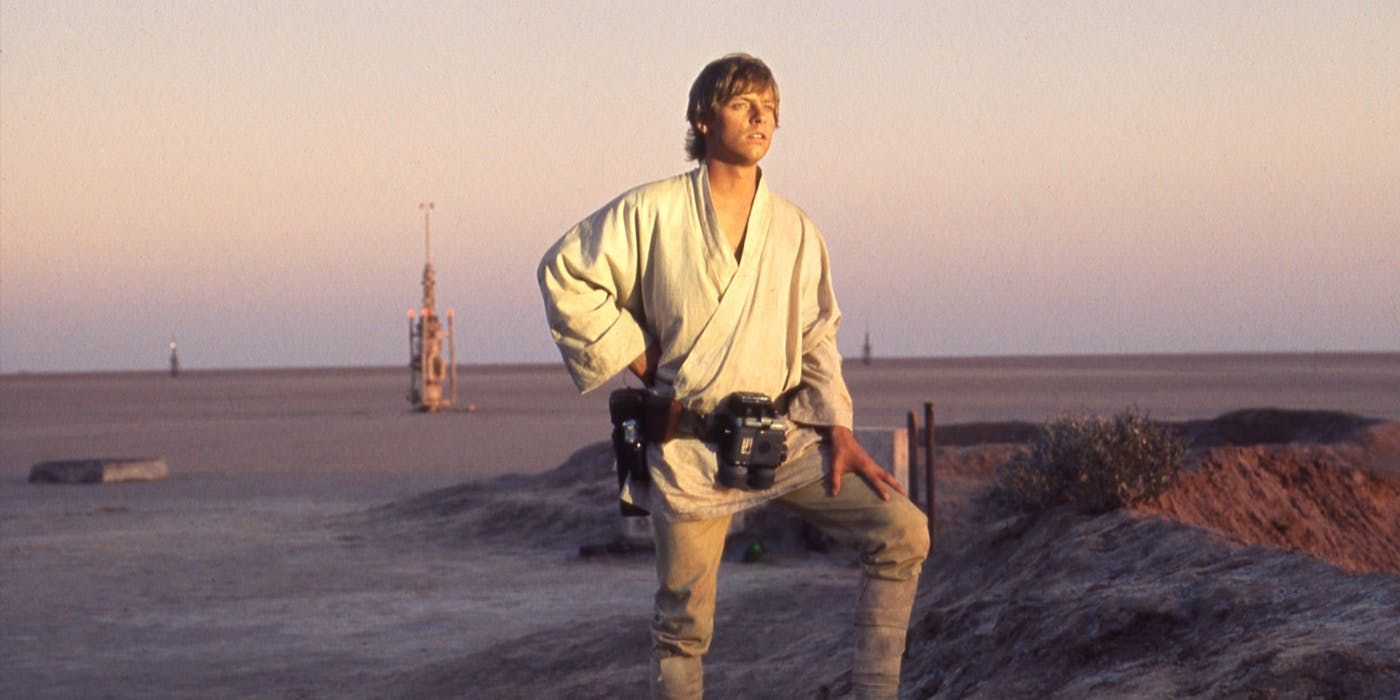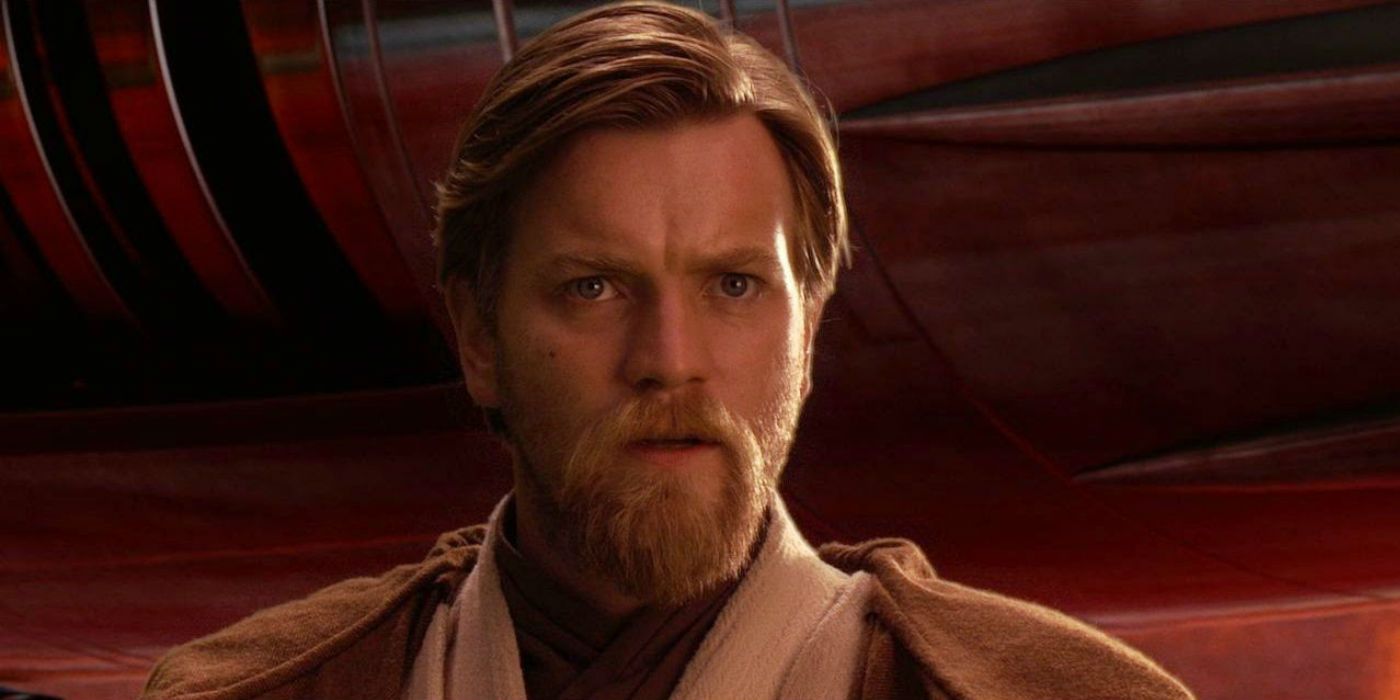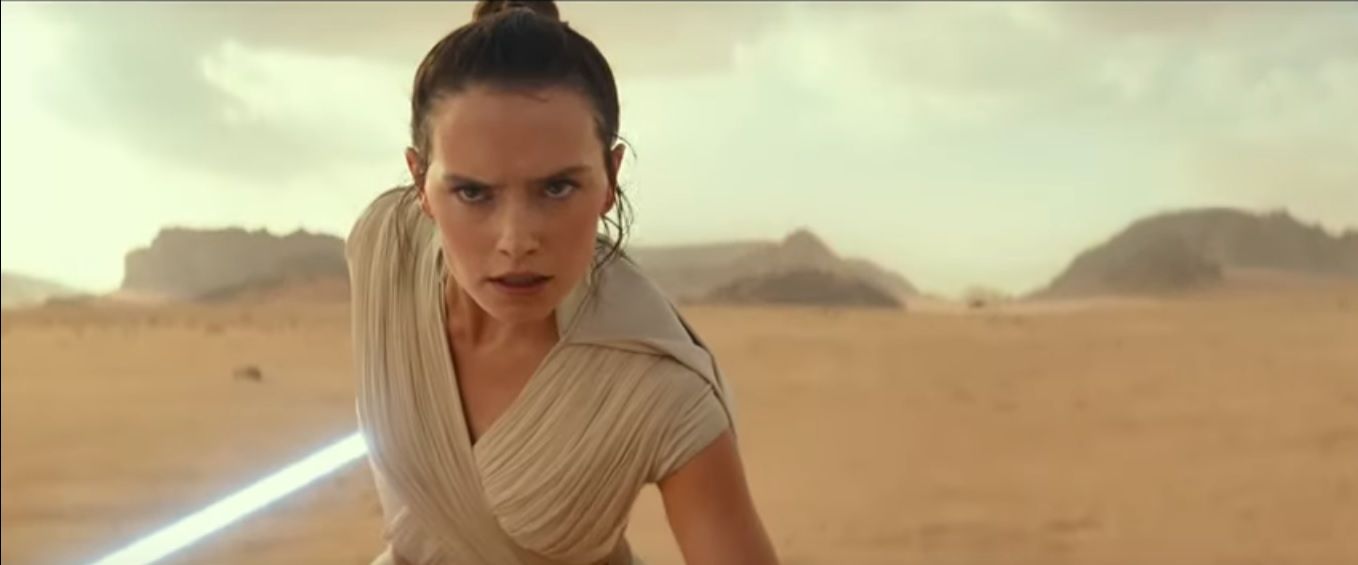The recently released special look at Star Wars: The Rise of Skywalker mostly consists of short, silent clips from previous installments of the franchise, meant to build our anticipation for the new footage. It's also meant to place The Rise of Skywalker in context as the fulfillment of the four-decades-in-the-making story. Fans mostly took the old footage for granted, concentrating instead on the trailer’s second half, but they may have missed revealing information on how Disney views the story.
THE STORY OF A GENERATION
The D23 trailer begins with footage from 1977’s Star Wars -- otherwise known as A New Hope -- continuing with short clips from 1980’s The Empire Strikes Back and 1983's Return of the Jedi. It then continues with scenes from the “prequel trilogy,” released between 1999 and 2005, before picking up with 2015’s The Force Awakens and 2017’s The Last Jedi.
In other words: In attempting to encapsulate the saga, referred to in the trailer as "the story of a generation," which is now “coming to an end” with Rise of Skywalker, the producers have chosen what fans call Release Order (that is, the movies in order of release date) as opposed to Episode Order (the movies in order of in-universe chronology).
RELATED: The Phantom Menace at 20: How Star Wars Fans Learned to Love the Prequels
RELEASE ORDER vs. EPISODE ORDER
The cause of Episode Order has most consistently been taken up by George Lucas himself. (Of course, he is significantly less critical of the Prequel Trilogy than the average viewer is.) Lucas believes that a viewer watching the Star Wars saga for the first time should begin with Episode I for the best viewing experience. Proponents of Release Order, who are in general more critical of the prequels, note that watching in Episode Order will neutralize some of the series’ most famous twists and spoilers -- such as the iconic “I am your father” scene -- in addition to causing other viewing unpleasantries and inconsistencies.
To get around the problematic prequels, fans have invented variations on Episode and release order, the most famous of which has been referred to as “machete order.” Machete Order recommends starting with Episode IV (the original Star Wars), continuing to Episode V, and then “flashing back” to the past with Episodes II and III before returning to continuity with Episode VI and beyond. In strict machete order, Episode I is omitted for not being strictly necessary to tell the story — and some viewers have found that omitting Episode II works as well. This order has many advantages and even makes the strikingly different tone of the prequels work to their advantages, as the “flashback” episodes take on a dreamlike, idealized quality.
That is how the prequel episodes are treated in the D23 trailer: idealized, as color and background for the story of Luke Skywalker and his friends, which comes to an end in the upcoming Rise of Skywalker. Sandwiched in the middle, the shots from the prequel trilogy are a brief interlude between the other two trilogies, with their continuity of stars -- Hamill, Fisher, Ford and Williams -- and themes. The connections between the original trilogy and the sequel trilogy make a pleasing symmetry that wouldn’t be there had the prequel trilogy to come first.
FROM LUKE SKYWALKER TO RISE OF SKYWALKER
The decision to present the movies in Release Order so may seem innocuous enough: there are lots of reasons to start with Star Wars (Episode IV), including that it is fondly remembered in contrast to 1999’s The Phantom Menace, which inaugurates Episode Order. Episode Order might also create a certain nostalgia in the viewer for the time in their life when the various movies were released, conjuring a chronological host of memories. But, as with most things Star Wars, the editing decision can’t help taking sides in the fan debates. It’s important to note that the “story” that the preview is describing does not include Rogue One or Solo, the two non-episode Star Wars movies to date: the story of Star Wars is the story of Episodes I-XI, and that story begins with Episode IV rather than Episode I.
For now, Disney seems determined to position the original trilogy as the heart of the series, and the place for viewers to start, with the prequels serving as a supporting flashback. Depending on how The Rise of Skywalker is received, fans will no doubt have their own opinions.
Directed and co-written by J.J. Abrams, Star Wars: The Rise of Skywalkerstars Daisy Ridley, Adam Driver, John Boyega, Oscar Isaac, Lupita Nyong’o, Domhnall Gleeson, Kelly Marie Tran, Joonas Suotamo, Billie Lourd, Keri Russell, Matt Smith, Anthony Daniels, Mark Hamill, Billy Dee Williams and Carrie Fisher, with Naomi Ackie and Richard E. Grant. The film arrives on Dec. 20.




